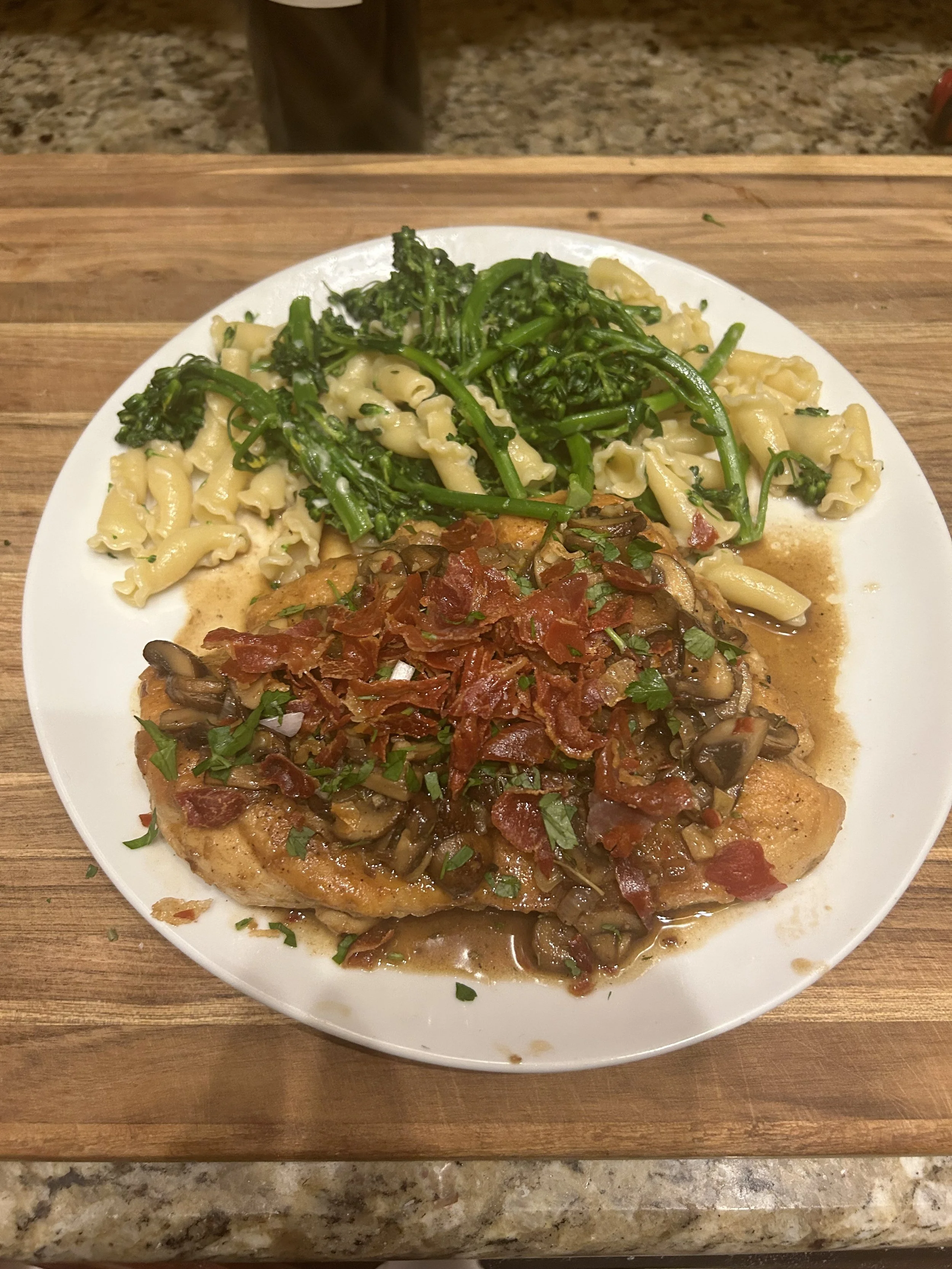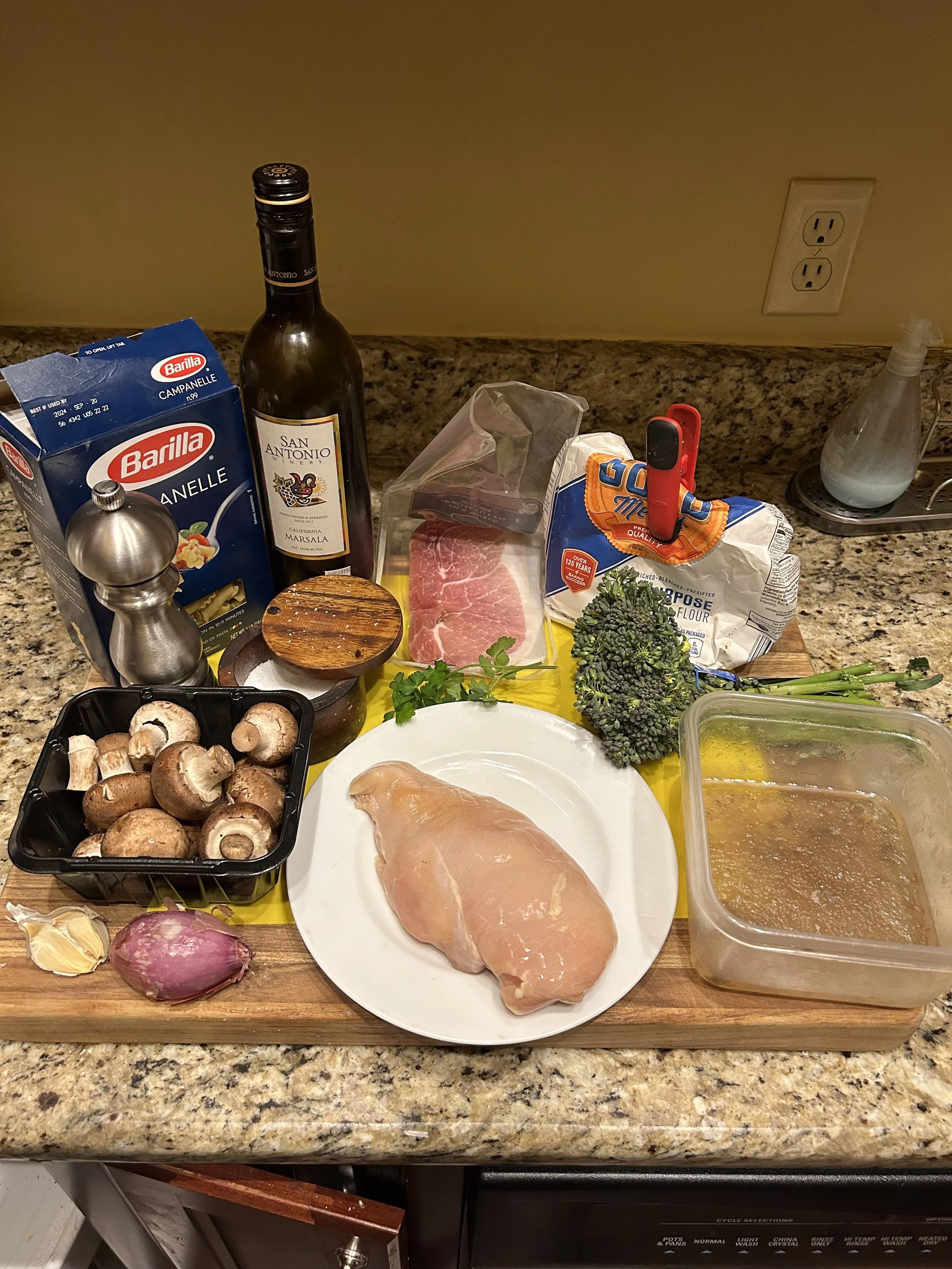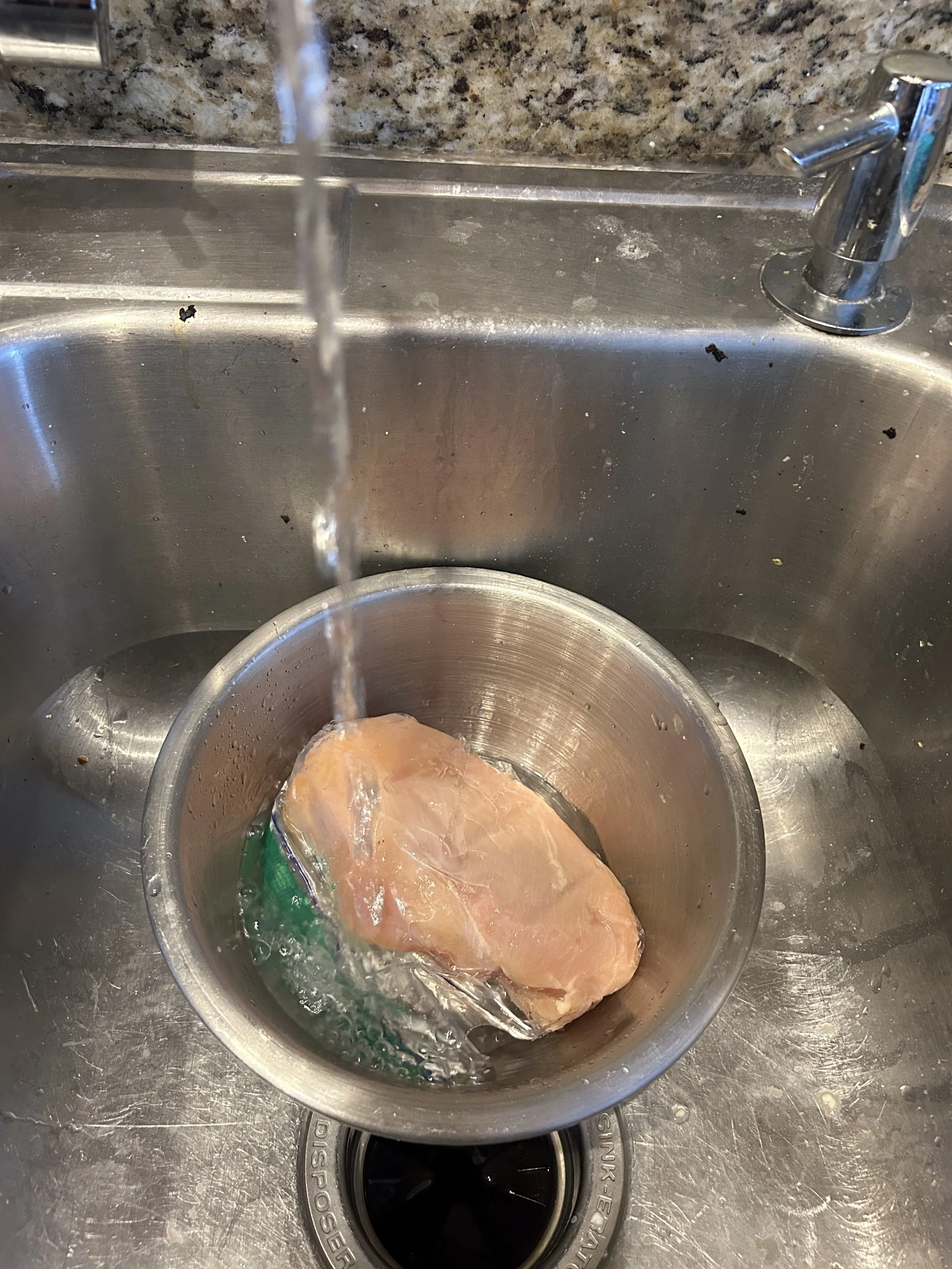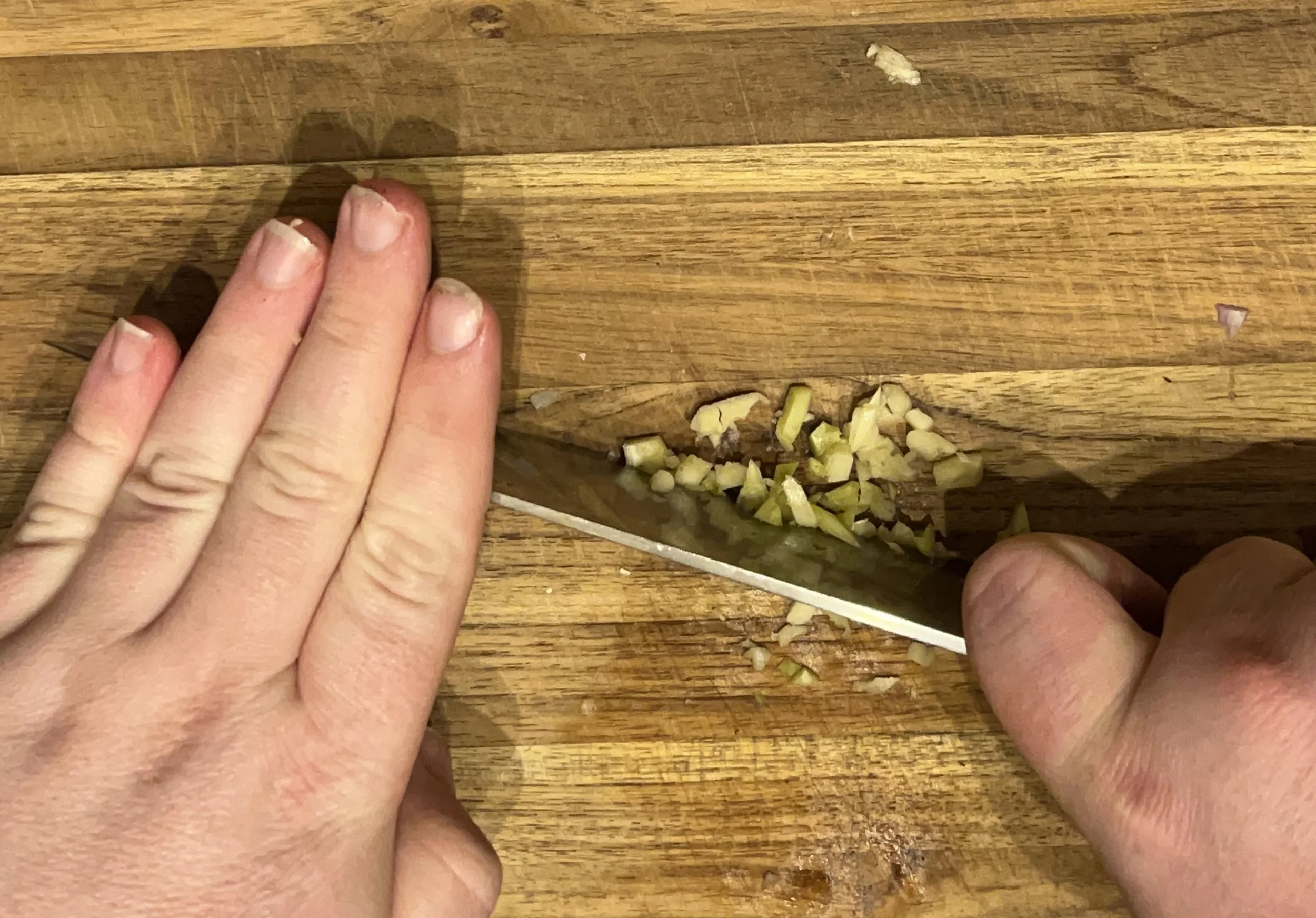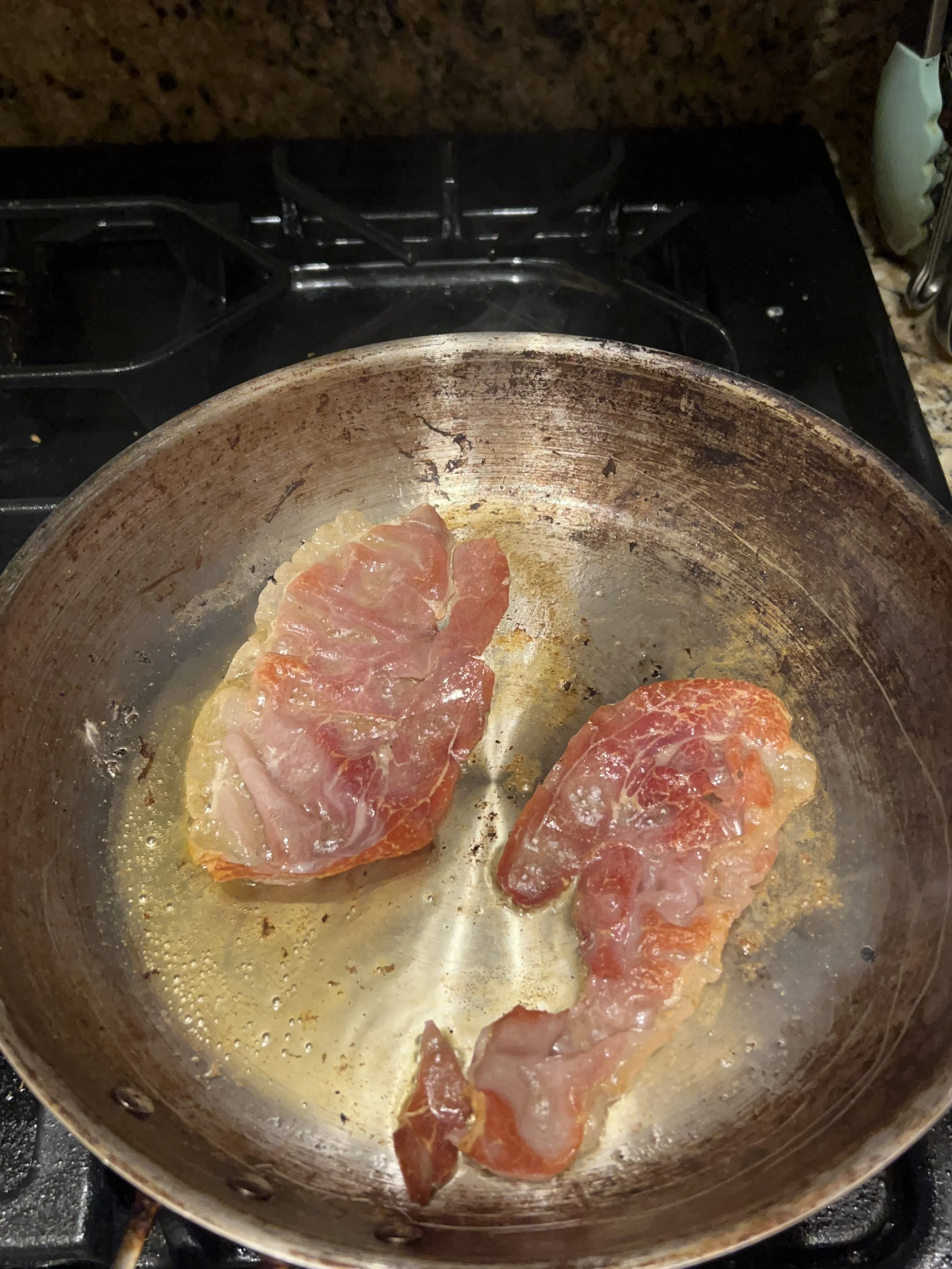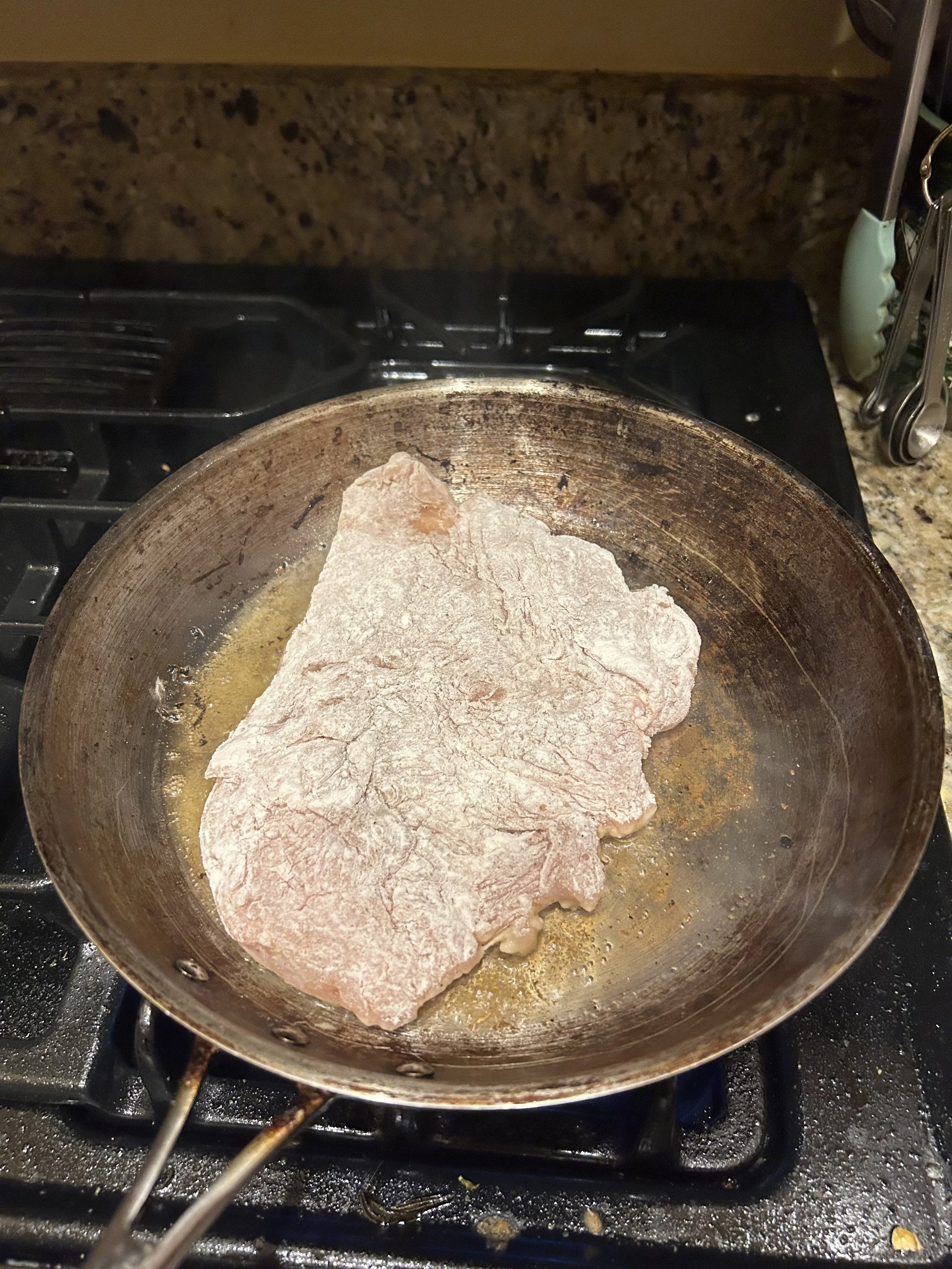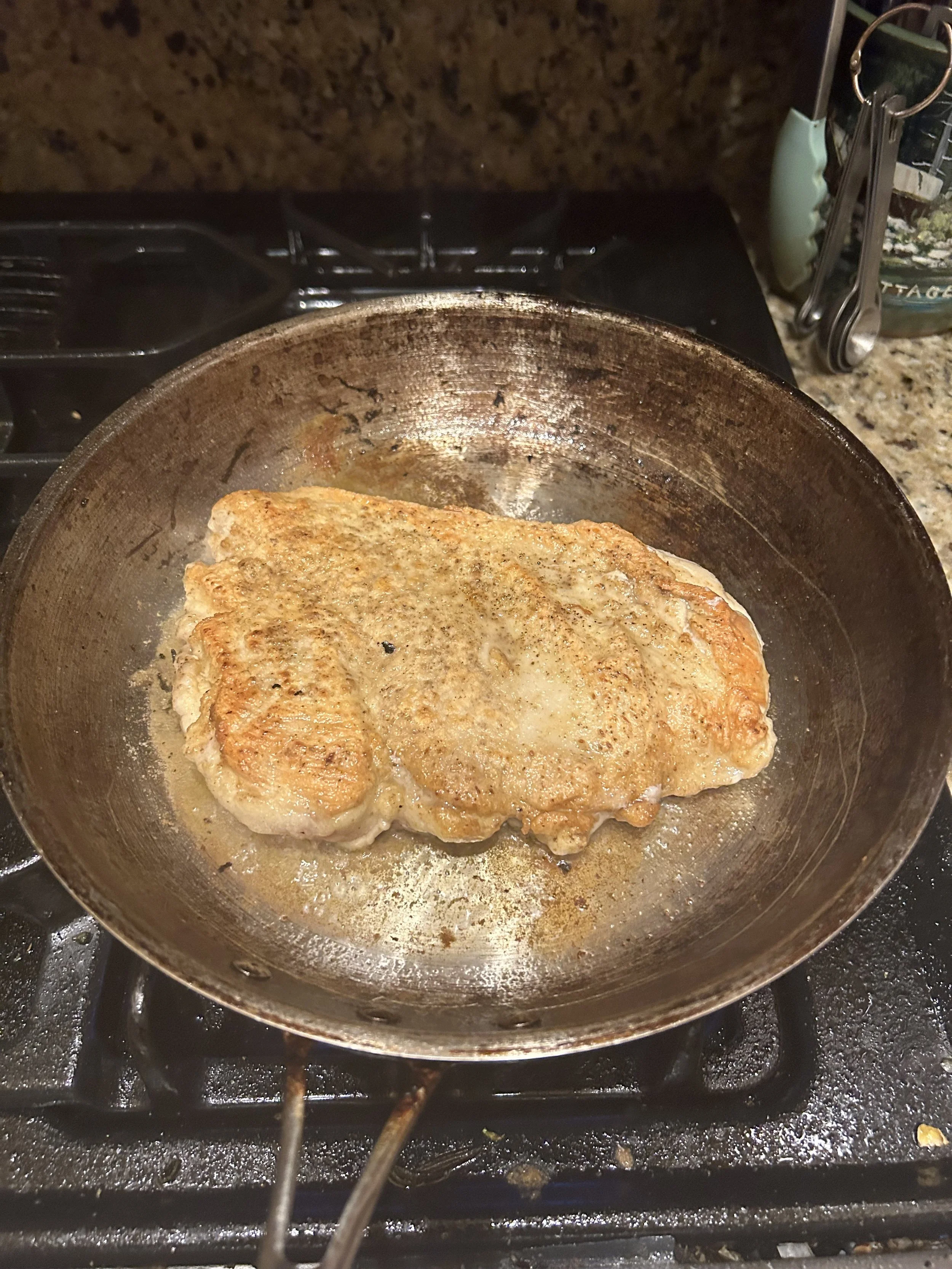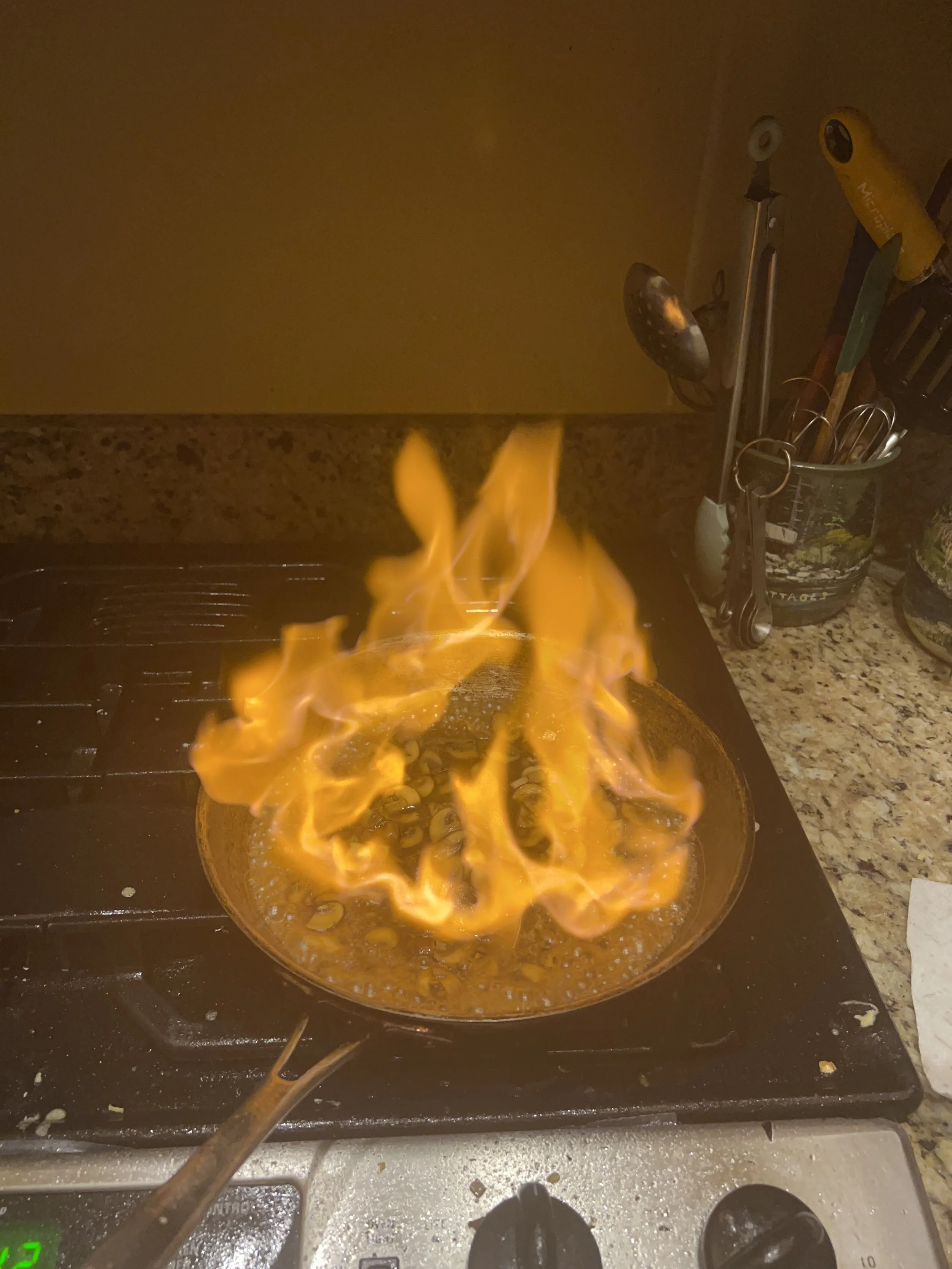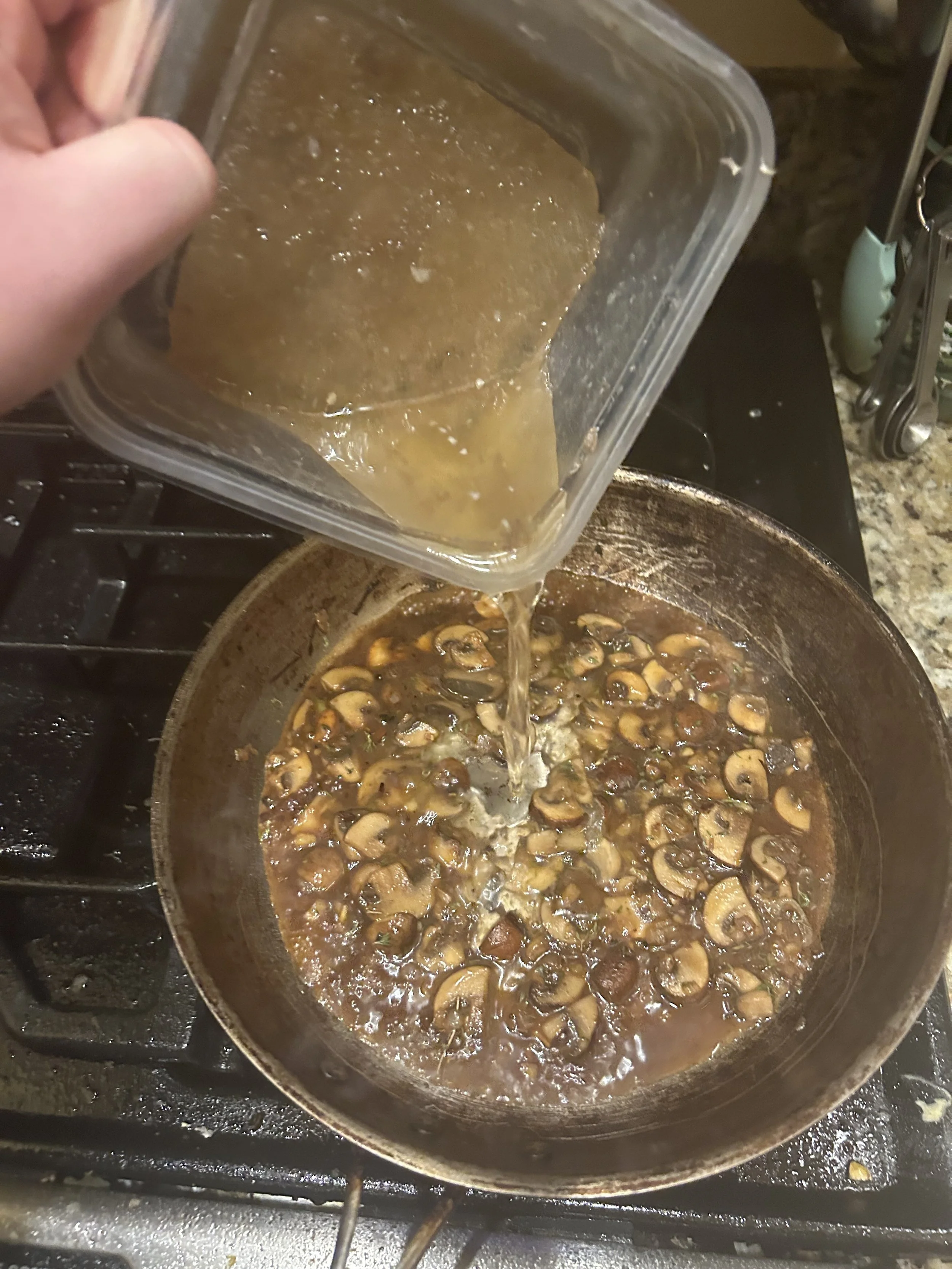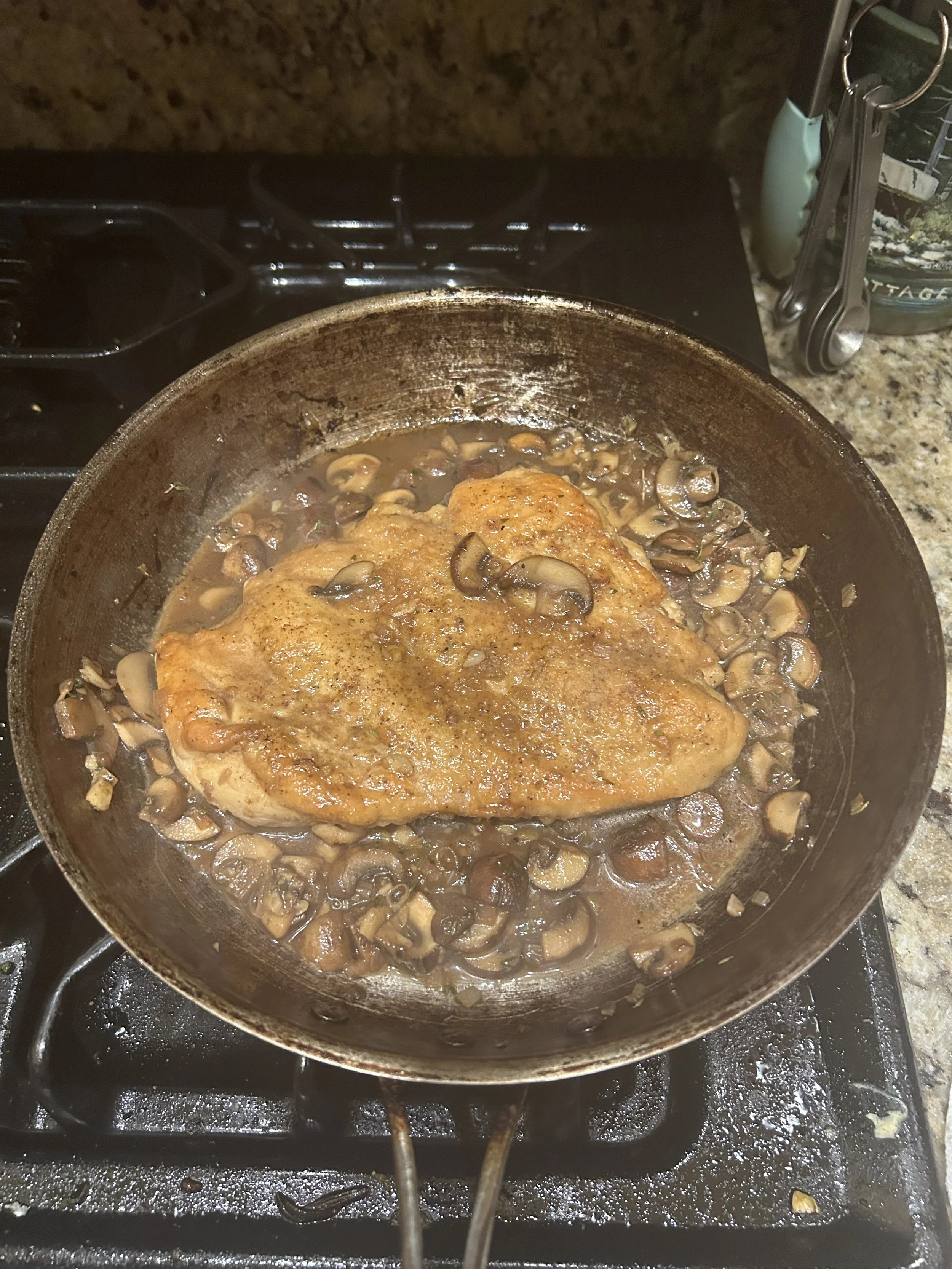Chicken Marsala
Chicken marsala is a real classic; Thin cutlets of chicken breasts bathed in a sauce made with mushrooms, chicken stock, and marsala wine. Not only is it incredibly easy to make at home, but it helps to hone in on 9 more essential cooking skills that any home cook should know.
Let’s dive into it!
This first cooking skill doesn’t involve cooking at all but is something that is worth going over.
Cooking Skill #1: Quick Thawing Meat
Most cuts of meat take a day or two to defrost in the fridge, but sometimes we find ourselves in a situation where we either don’t have that kind of time or forgot to do so. In any case, here is a quick way to thaw meat in only a few short hours.
Place the meat you wish to cook into a sealable plastic bag and place it into a bowl or container large enough to hold it. Place the bowl into the sink, then run the meat under cold, running water and it will be good to go in 2-3 hours.
By the way, your meat might turn slightly opaque from this method, especially thin strips of chicken or shrimp, but once you cook that meat, it will be fine.
Cooking Skill #2: Butterflying chicken
Mise en place is as important for cooking any dish as it is to set up barbells for weightlifting.
In this case, we are going to cut the thick part of the chicken breast in half so we can pound it thin and allow the chicken to cook quicker, a method known as butterflying.
Flip your chicken breast so the smooth side (or the side where the skin used to be) is facing down, then take a sharp knife and carefully slice into the thickest part of the chicken, going in long strokes. Once your knife is about halfway through the chicken, you should be able to open it up like…a butterfly’s wings.
With the mallet, you want to grip it at the base of the head. This will give you more control over the mallet and allow you to hit the chicken with greater force with less effort.
From there, lay a sheet of plastic wrap on top of the chicken and use a meat mallet to pound the chicken into an even thickness. Once all of your chicken has been butterflied, set it aside while you prepare the vegetables.
In this case, we will be using shallots, garlic, and mushrooms. Cremini or baby bellas are classic for this, but you can use any mushrooms that you have on hand.
For shallots, I treat them the same way I treat a larger onion. I’ll cut off the top, cut them in half, and take off the papery skin. From there, I’ll make one or two horizontal cuts into the shallot before turning it, making thin, vertical cuts along the width of the shallot and finishing by slicing across into a nice mince.
For garlic, I’ll lay the side of my knife on the garlic and give it a light smack to pop off the skin. I’ll then crush the garlic the same way before running my knife along the garlic in a rocking pattern.
For mushrooms, I’ll cut off the dirty stem end before cutting the mushroom in half to create a flat surface, laying it on that side, and slicing it widthwise to make nice slices.
For this recipe, you’ll need to chop up two large shallots, four cloves of garlic, and two quart containers of mushrooms.
Once everything is ready to go, we are ready to move onto the next cooking skill.
Cooking Skill #3: Dredging
Dredging is a process where we coat a piece of meat, the chicken in this case, in a light dusting of flour. This flour will help the chicken brown nicely and also some of that flour will come off into the pan to help thicken the sauce later on.
Season all of the chicken on both sides with salt and pepper, then lay each breast into a plate or shallow dish filled with flour and flip to coat, making sure you shake off the excess.
Once all of the chicken is dredged, it’s time for another crucial step.
Cooking Skill #4: Pre-heating a pan
A step that gets surprisingly overlooked in home kitchens.
If you were to lay your chicken into a cold pan, what would happen is the chicken would absorb the oil in the pan as it heats up, and instead of a tasty, seared chicken breast, you would end up with a mouthful of grease.
Before you add anything to a pan, make sure it is heated properly over medium-high heat. You’ll know your pan is hot when you can start to see whiffs of smoke coming off of the pan. You’ll also know it’s hot enough when you put the chicken in the pan and you immediately hear a loud sizzle.
You can use the time of heating the pan to get organized and make sure you have everything you need ready to go.
Also, you may have heard of the phrase ‘hot pan, cold oil’, well I say that if the pan and oil are heated at the same time, then that will promote even cooking.
Cooking Skill #5: Pan-Searing
Once you know that your pan is hot enough, it is time to lay in the chicken and get it seared…but before we do that, here’s an added component.
Yes, this is not a nonstick pan, and I am fine with this. To create a pan sauce, you need sticky-brown bits from searing the chicken and you do not get that with nonstick.
A classic thing to do for chicken marsala is to use a cured pork product. Pancetta is classic, but I like crisping up thin slices of prosciutto that I’ll crumble on top of my chicken for some crispy bits.
Doing this is very simple; lay the prosciutto into the hot pan and leave it for a minute or two on each side until golden and crisp. I like doing this before cooking the chicken to add extra flavor to the whole dish and ensure the ham gets crispy.
Drain onto some paper towels and set aside while you sear the chicken.
To do this, pick up one corner of the chicken (tongs help), and gently lay it into the pan. You want to lay the chicken away from you, as that will prevent the hot oil from splattering onto you. (Believe me, that is not a good feeling).
Depending on the size of your pan and how many people you’re cooking for, you might need to do this in batches, as you want the chicken to sit in an even layer in the pan. If the chicken overlaps, then it won’t cook evenly and the flour on the outside can become pasty.
If the chicken doesn’t look something like this, then your pan wasn’t hot enough. Sorry.
Once the chicken is in the pan, leave it alone for at least 3 minutes so the chicken can develop a nice golden-brown exterior. Once the chicken is seared, flip it and let it cook on the other side until browned, another 3-4 minutes.
If the chicken isn’t fully cooked at this point, don’t worry because it will continue to cook once it’s simmered into the sauce.
Once the chicken is seared, remove it to a plate and set it to the side while you work on the sauce.
Cooking Skill #6: Sauté
The beauty of this dish is that you do not need to change pans after cooking the chicken, because there is flavor at the bottom of the pan that is essential for making a good pan sauce.
Add a bit of oil to the pan you just seared the chicken in, then add in the shallots, garlic, and mushrooms. I’m not worried about the shallots and garlic burning, because the water from the mushrooms will help prevent that.
Cook the vegetables over medium-high heat, stirring now and then to prevent burning, until the mushrooms are soft. At this point, you can also add some herbs like thyme or sage.
From there, it is time for another fun, albeit dangerous, cooking skill.
Cooking Skill #7: Flambe
Flambe is a process where you cook alcohol, the marsala wine, to the point where it goes into flames. This process burns off the alcohol and concentrates some wonderful flavors. Now, here are a few safety tips.
Make sure your hair is tied back and you have no loose clothing.
Make sure there is nothing flammable near your stove before you Flambe
Make sure you have a tight-fitting lid standing by in case the flames get out of hand. (Also have a fire extinguisher nearby in case things really get out of hand.)
To get started; move the pan away from the burner or heat source. Quickly pour in the 1 cup of marsala before tilting the pan towards the flame of your stove until the flames appear. If you have an electric stove, then you can light a long match or use a long candle lighter to get it going.
To discourage one thought, the marsala itself is not on fire, it is the alcohol vapors that the wine releases from cooking. The flames burn these vapors and allow the marsala to concentrate it’s sweet, rich flavor.
The flames should go out on their own after about a minute or two, at that point, it is time to get on with the rest of the sauce.
Cooking Skill #8: Making a pan sauce
Once your flambe is successful, it is time to add 1 cup of chicken stock to the pan. (I used homemade stock, but low-sodium store-bought broth is fine)
You can also lay the chicken, along with any accumulated juices, back to the pan so the chicken can finish cooking and take on some of the flavors of the sauce. You’ll want to bring the liquid to a simmer and let it go for 4-6 minutes, or until the liquid has reduced and slightly thickened.
From there, it is time for the final, and most important skill for any home cook.
Cooking Skill #9: Tasting
What’s the point of serving food to your family or friends if you don’t know if it tastes good?
Dip a small spoon into the sauce and give it a taste. Does it need more salt? Is it the consistency you want? Can you taste the marsala? You be the judge.
Adjust the sauce until you are happy with it, then you are ready to serve! I like garnishing with the crumbled prosciutto, and some chopped parsley, then serving with a side of pasta and blanched broccolini.
And there you have it, a delicious chicken marsala that’ll make for a tasty weeknight dinner and get you to appreciate 9 more cooking skills that helped construct it!
Chicken Marsala
Servings: 4
4 chicken breasts
Kosher salt and freshly ground black pepper
1/4 cup of flour, dumped into a large plate or shallow dish.
8 thin slices of prosciutto
Olive oil
2 large shallots, minced
4 cloves of garlic, minced
2 quart containers of cremini mushrooms, sliced
2 teaspoons of fresh thyme
1 cup of marsala wine
1 cup of chicken stock
Chopped fresh parsley, for garnish
Cut into the thickest part of each chicken breast to butterfly them. Lay a sheet of plastic wrap on top of the chicken, then pound thin with a meat mallet.
Season the chicken with salt and pepper, then lay it into the flour, coating on all sides and dusting off the excess. Set aside.
Heat a large pan with a thin layer of oil over medium-low heat, then add the prosciutto slices and cook for 1-2 minutes on each side, or until golden and crispy. Drain onto paper towels and set aside.
Once all of the prosciutto slices are browned, heat the same pan over medium-high heat with another thin layer of oil, then lay in the chicken and cook until golden brown on both sides, 4-5 minutes per side.
Remove the chicken onto a plate, then add more oil along with the shallots, garlic, mushrooms, and thyme. Season with salt and pepper, then cook until the mushrooms are browned and soft.
Remove the pan from the heat, then add the marsala and tilt the pan towards the flame to ignite. Let the flames go until they extinguish themselves, should take 1-2 minutes, then add the chicken stock.
Lay the chicken and any accumulated juices back into the pan, bring to a simmer, then cook until the chicken is cooked through and the sauce has reduced by half.
Season to taste, garnish with the crumbled prosciutto and parsley, then serve!

